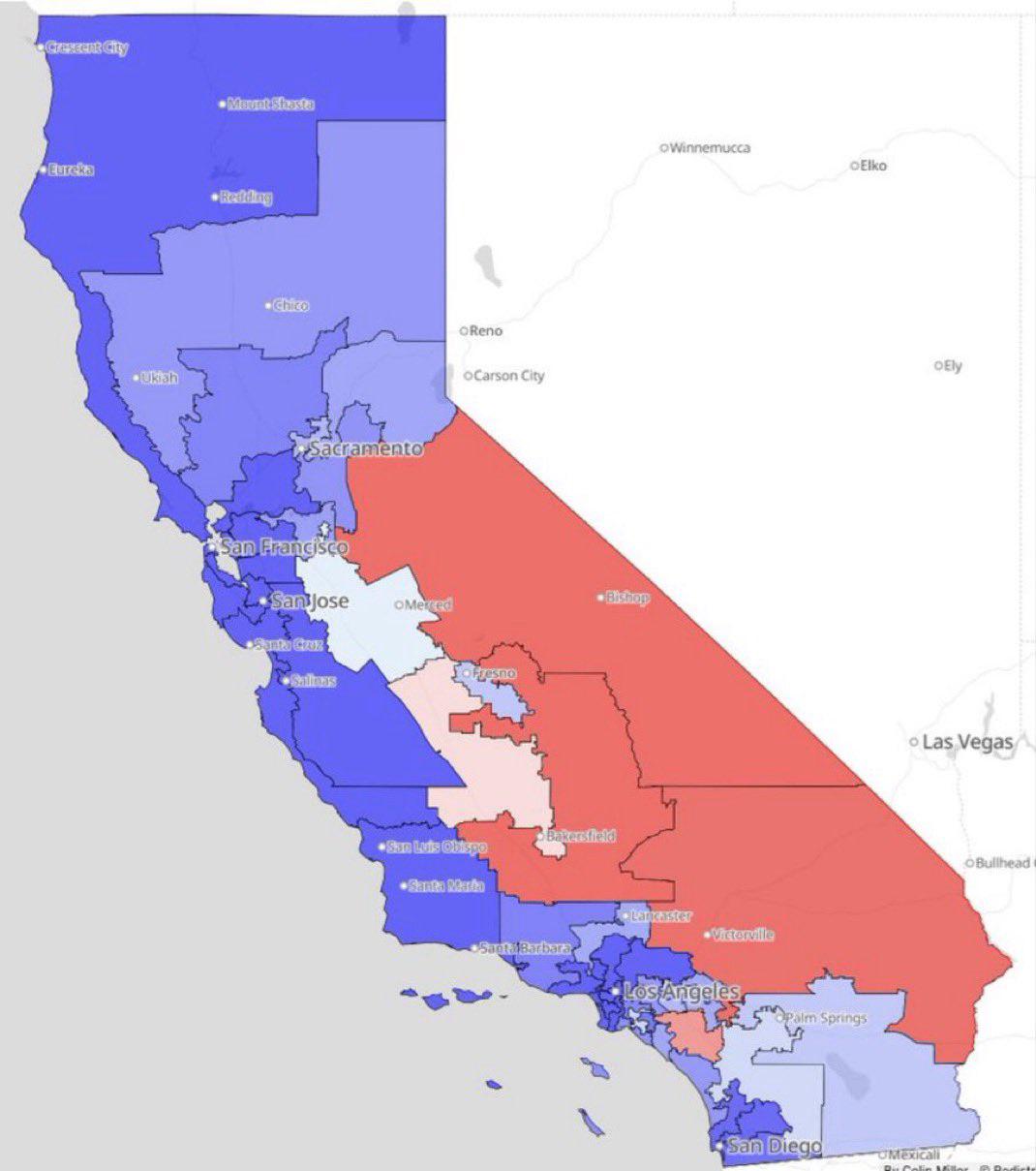California Proposed Congressional Map for 2024


Marcus Rodriguez
Historical Geography Expert
Marcus Rodriguez specializes in historical cartography and geographic data analysis. With a background in both history and geography, he brings unique...
Geographic Analysis
What This Map Shows
The visualization titled "California’s New Proposed Congressional Map, Where Democrats Could Pick Up To 5 Seats, Canceling Out Losses In Texas" illustrates a significant potential shift in California's political landscape ahead of the 2024 elections. The map outlines the proposed redistricting that could enable the Democratic Party to gain up to five additional congressional seats, which could offset expected losses in states like Texas. This shift is crucial as it highlights the ongoing changes in voter demographics, party affiliation, and regional political strategies that define California’s electoral map.
Deep Dive into Congressional District Redistricting
Redistricting is the process of redrawing electoral district boundaries, which takes place every ten years following the national census. In California, this process is not just a bureaucratic necessity; it can dramatically influence political power and representation. The state’s population growth, particularly among diverse communities, has necessitated adjustments in its congressional districts.
Interestingly, California has been experiencing a demographic shift, with an increasing population of Latinos and younger voters, who tend to lean Democratic. This demographic change is crucial because it can affect party strength within various districts. The proposed map reflects these trends, aiming to consolidate Democratic voters in certain areas, which could lead to increased Democratic representation in Congress.
However, it’s essential to understand that redistricting is not merely about population numbers; it’s also about political strategy. The Democrats have focused on creating districts that can swing in their favor, often referred to as 'safe districts.' For instance, areas like Los Angeles and the Bay Area are likely to see districts designed to maximize Democratic turnout, while also considering the impact of urban versus rural voting patterns.
Historically, California has been a Democratic stronghold, but recent elections have shown that Republicans can still be competitive in certain areas, particularly in the Central Valley and parts of Southern California. The proposed map attempts to address these challenges directly, ensuring that Democrats can maintain or expand their influence while countering any potential losses in traditionally Republican strongholds.
Regional Analysis
Breaking down the proposed map, we can see distinct patterns emerge across California's various regions. For instance, in urban areas like San Francisco and Los Angeles, the focus is on consolidating Democratic voters. This strategy is reflected in districts that encompass diverse neighborhoods, increasing the likelihood of Democratic wins in these areas.
In contrast, the Central Valley presents a different challenge. This region has historically leaned Republican but is also becoming more diverse. The proposed map indicates a potential shift here as well, with districts that might incorporate more mixed communities, thereby increasing the chance for competitive races.
Interestingly, coastal regions, known for their liberal leanings, are also seeing adjustments. Districts in these areas are designed to not only protect existing Democratic seats but also to create opportunities for new candidates who can energize the electorate. For example, districts around Orange County, once a Republican bastion, are being redrawn to reflect their changing demographics, which could lead to fierce contests in the upcoming elections.
Significance and Impact
The significance of this proposed congressional map extends beyond California. As Democrats look to offset potential losses in states like Texas, where they are facing increasing challenges, California’s gains could play a crucial role in national politics. The outcomes of these elections may significantly impact the balance of power in Congress, shaping policies for years to come.
What’s fascinating is that redistricting is often a contentious process, with accusations of gerrymandering frequently surfacing. However, in California, the aim has been to create fair and competitive districts that reflect the state’s diverse population. As voters become more engaged and aware of these changes, they may influence the political landscape even further.
Ultimately, the proposed map signifies a strategic maneuver by California Democrats to not just maintain their foothold but to actively seek to expand it in an increasingly competitive political climate. The implications of this redistricting will be felt not only within the state but across the nation as the political dynamics continue to evolve leading up to the 2024 elections.
Visualization Details
- Published
- August 16, 2025
- Views
- 114
Comments
Loading comments...